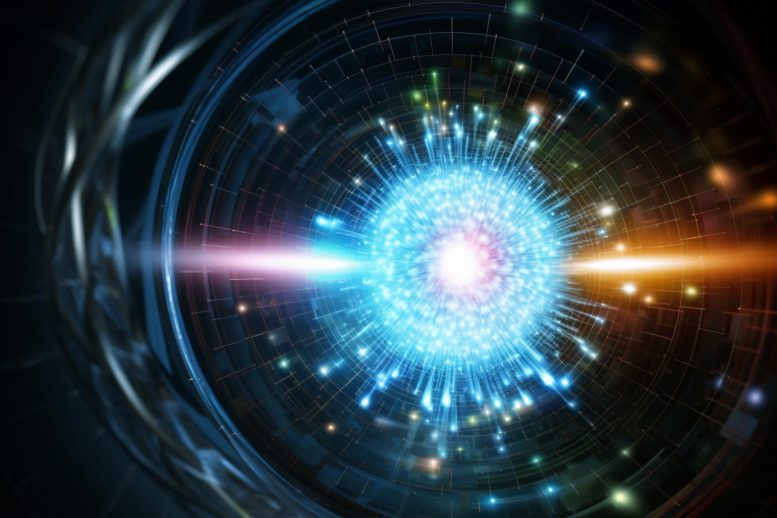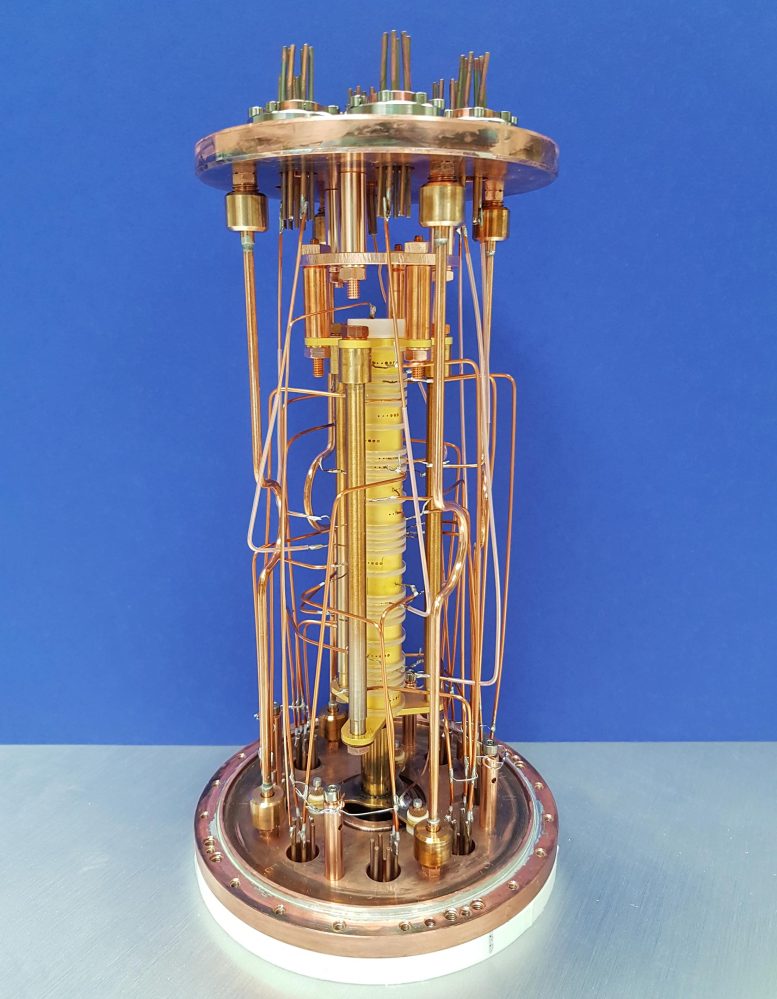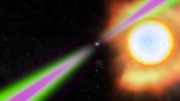
In the 1930s, the concept of neutrinos emerged to explain missing energy and momentum in nuclear beta decay, leading to their eventual experimental confirmation in 1956. These ghostly particles, barely interacting with matter, pass through us unnoticed from cosmic sources like the sun. Advanced research has shown that neutrinos oscillate between types and possess mass, contradicting previous theories and suggesting undiscovered physics. Credit: SciTechDaily.com
The discovery and ongoing research into neutrinos have significantly altered the foundational concepts of particle physics, highlighting the particles’ mass and challenging the accuracy of the standard model.
In the 1930s, it turned out that neither the energy nor the momentum balance is correct in the radioactive beta decay of an atomic nucleus. This led to the postulate of “ghost particles” that “secretly” carry away energy and momentum. In 1956, experimental proof of such neutrinos was finally obtained.
The challenge: neutrinos only interact with other particles of matter via the weak interaction that is also underlying the beta decay of an atomic nucleus. For this reason, hundreds of trillions of neutrinos from the cosmos, especially the sun, can pass through our bodies every second without causing any damage. Extremely rare neutrino collisions with other particles of matter can only be detected with huge detectors.
Neutrino Oscillations and the Challenge to the Standard Model
Solar neutrinos brought another ground-breaking revelation: the three types of neutrinos known to date can transform into each other. However, these “neutrino oscillations” had a serious consequence for the worldview of particle physics. Previously, it was assumed that neutrinos had no rest mass, like photons. This would be compatible with the standard model of particle physics, the best description of the particle world to date. However, the oscillations forced a rest mass for neutrinos — a further indication that new physics must exist beyond the standard model.
Measuring Neutrino Mass through Beta Decay
Knowing the exact rest mass of the neutrino would therefore be an open sesame into the unknown world of new physics. Unfortunately, you cannot simply place a neutrino on a scale. This requires extremely complex experiments on technically accessible physical processes involving neutrinos.
“One way is the beta decay of tritium,” explains Christoph Schweiger, doctoral student in Klaus Blaum’s department at the Max Planck Institute for Nuclear Physics.
Here, one of the two neutrons in the superheavy hydrogen decays into a proton and emits an electron and a neutrino, thereby transforming the atom into lighter helium. This process is “weighed” by the KATRIN experiment at the Karlsruhe Institute of Technology.
Electron Capture and Energy Measurement in Neutrino Research
“The complementary path is the electron capture of the artificial isotope holmium-163,” continues Schweiger.
Here, the atomic nucleus captures an electron from the inner electron shell, whereby a proton is converted into a neutron, resulting in the element dysprosium-163. This also releases a neutrino, amongst other things.
The international ECHo collaboration, in which the Heidelberg scientists are involved, attempts to measure this decay process energetically with extreme precision. According to Einstein’s E = mc2, mass and energy are equivalent, so measuring energy can be equated with weighing masses.
As a “calorimeter,” ECHo measures extremely accurately the total energy released in this decay: This corresponds to a maximum of the Q value minus the rest mass of the neutrino released. For this purpose, the holmium-163 isotope is incorporated into a layer of gold atoms.

An extremely precise atomic balance: PENTATRAP consists of five Penning traps arranged one above the other (yellow tower in the middle). In these identically constructed traps, ions in the excited quantum state and in the ground state can be measured in comparison. In order to minimize uncertainties, the ions are also moved back and forth between different traps for comparative measurements. Credit: MPIK
Advanced Techniques in Mass Measurement
“However, these gold atoms could have an influence on holmium-163,” explains Schweiger. “It is therefore important to measure the value of Q as precisely as possible using an alternative method and to compare it with the calorimetrically determined value in order to detect possible systematic sources of error.”
This is where the Heidelberg pentatrap experiment and Schweiger’s doctoral thesis come into play. Pentatrap consists of five so-called Penning traps. In these traps, electrically charged atoms can be captured in a combination of a static electric and magnetic field. These ions perform an intricate “circle dance,” which allows their mass to be determined with extreme precision.
“With an Airbus A-380 with a maximum load, you could use this sensitivity to determine whether a single drop of water has landed on it,” says the physicist, illustrating the capabilities of this super scale.
Implications of Neutrino Mass Measurements
In principle, a Penning trap works like a swing. If you place two children of different weights next to each other on two swings of the same type and push them equally hard, you will gradually observe a shift in the swing frequencies. This can be used to calculate the difference in weight between the two children. In the case of the pentatrap experiment, this is the difference in mass between a holmium-163 ion and a dysprosium-163 ion.
In addition, the faster both children swing, the sooner the result is obtained, which is also much more accurate for the same observation time than for slow swinging. For this reason, the team removed 38, 39, and 40 electrons from the “highly charged” ions in three different series of measurements, which made their “circle dance” considerably faster.
“If everything works, a measurement will only take a few weeks,” says Schweiger.
The Future of Neutrino Mass Research
From the differences in mass as a result of various frequency measurements, via E = mc2 the Heidelberg scientists were finally able to determine a Q value for electron capture that was 50 times more precise than before.
“The contribution of the three theory groups, including Christoph Keitel’s group here at the institute, was just as important as our measurement,” emphasizes Schweiger.
In addition to the frequency difference between the two ions, a second variable has a significant influence on the Q value determined: the energy stored in the remaining electron system of a highly charged ion. As such a large ion is a multi-particle system, the calculation was correspondingly complex. It turned out that the calculations resulted in almost exactly the same Q values for the three measured charge states with 38, 39, and 40 electrons removed. This made it clear that systematic uncertainties in experiment and theory could be ruled out, Schweiger emphasizes enthusiastically. And what does this mean for the neutrino masses?
KATRIN determined the most precise upper limit to date of the neutrino mass by “weighing” at 0.8 electron volt per speed of light squared, which corresponds to an unimaginable 0.0000000000000000000000000000000000014 kilogram!
This order of magnitude of 10–36 corresponds approximately to the weight ratio between four raisins and the sun. And that is only an upper limit.
The analysis of the estimated mass distribution in the universe even arrives at a significantly lower upper limit of the neutrino masses of 0.12 electron volt per speed of light squared.
“However, this analysis is highly complex and depends on the cosmological model used,” says Schweiger.
In any case, it is clear that anyone who wants to weigh neutrinos faces extreme challenges at the edge of what is technically possible. Against this background, the Heidelberg result is a major step forward on the way to solving the mystery of neutrino masses.
Reference: “Penning-trap measurement of the Q value of electron capture in 163Ho for the determination of the electron neutrino mass” by Christoph Schweiger, Martin Braß, Vincent Debierre, Menno Door, Holger Dorrer, Christoph E. Düllmann, Christian Enss, Pavel Filianin, Loredana Gastaldo, Zoltán Harman, Maurits W. Haverkort, Jost Herkenhoff, Paul Indelicato, Christoph H. Keitel, Kathrin Kromer, Daniel Lange, Yuri N. Novikov, Dennis Renisch, Alexander Rischka, Rima X. Schüssler, Sergey Eliseev and Klaus Blaum, 19 April 2024, Nature Physics.
DOI: 10.1038/s41567-024-02461-9









Very interesting item especially the weight of neutrinos.